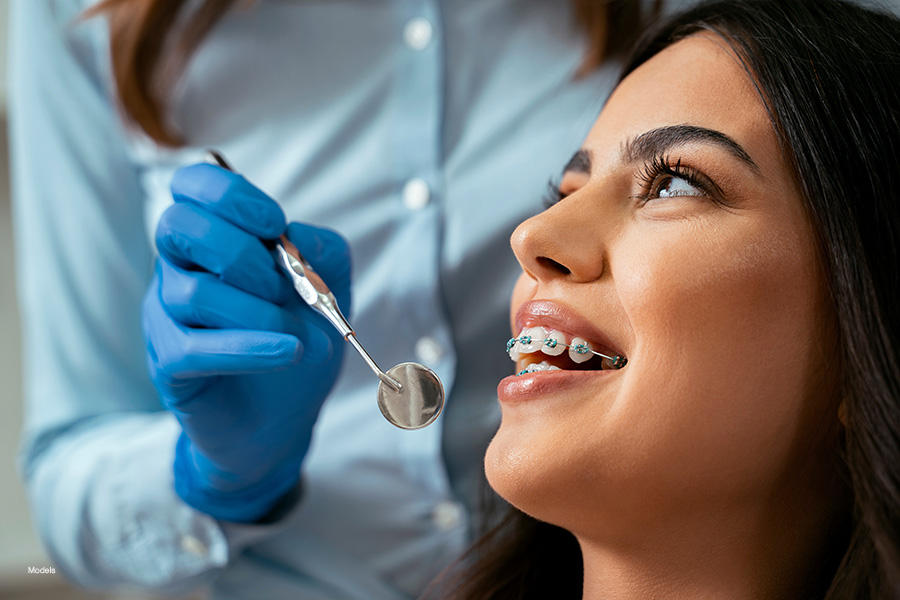Role of Orthodontics in the Treatment of Impacted Canine and Wisdom Teeth
Orthodontics is often considered a treatment for adolescents; many people assume the primary goal of braces is to straighten pre-teens’ teeth to ensure an ideal aesthetic. And while this is certainly an important facet of orthodontia, braces have a bigger role in oral hygiene.

In addition to straightening the teeth, braces can help align someone’s bite, reduce gaps in the teeth, and manipulate the teeth to help impacted canine and wisdom teeth erupt correctly.
What Are Impacted Teeth?
When a tooth is impacted, it is unable to erupt or break through the gumline. This happens when the tooth is blocked from erupting, usually due to a lack of space from crowded teeth. In the case of wisdom teeth, which emerge later than all the rest, it is a common issue for adults that there is insufficient room in the mouth.
Impacted teeth can cause a variety of problems, including:
- Pain or discomfort
- Infection caused by improper cleaning
- Pressure on surrounding teeth, resulting in forced shifting
- A misaligned bite caused by shifting
- Reversed results of orthodontic treatment
These issues are not always present when a person has an impacted tooth, but when they are, it can be very detrimental to the patient’s oral health.
How Can Braces Help Impacted Teeth?
Two types of teeth are the most likely to become impacted: wisdom teeth and canines. Canine teeth, specifically the maxillary canine, typically erupt around when the patient is 13 years old. As the maxillary canine teeth usually come in after the incisors and premolars, the teeth might not leave enough room for the new teeth to erupt.
Since many patients undergo orthodontia around ages 11-15, braces can help remedy impacted teeth. As the braces reposition the rest of the mouth, they can be used to make room for any impacted teeth. In many cases, this is enough to allow the impacted teeth to erupt on their own. Additionally, if the impacted tooth is too far below the gumline, your oral surgeon may have to remove some of the gum tissue in order to expose more of the tooth.
Orthodontists can utilize multiple tools to help the healthy development of impacted teeth. A metal bracket can be placed on the impacted tooth to bring it closer to the proper location. A rubber band can also help guide the tooth into the ideal position and align it with the rest of the teeth throughout the remainder of the orthodontic process.
Can Wisdom Teeth Be Fixed With Orthodontia?
In many cases, wisdom teeth erupt between the ages of 17-21, meaning many patients will have already undergone orthodontic treatment. In this case, wisdom teeth will most likely have to be extracted, as many patients will not have enough room for the new teeth, which would cause crowding and the possibility of teeth shifting.
However, when an adult patient begins orthodontic treatment, their orthodontist can monitor the progression of their wisdom teeth through X-rays. Depending on the situation, the orthodontist may suggest extraction before applying braces, or they may leave the wisdom teeth for a period if they are not currently causing issues.
How Can I Prevent Issues With Impacted Teeth?
There is no way to prevent impacted teeth, but you can prevent secondary issues such as infection and the reversal of orthodontic work.
One way is to regularly monitor the development of wisdom teeth with dental exams and X-rays. Your dentist can tell if your impacted teeth are in danger of crowding your teeth and can help you prevent issues.
Interested in Learning More About Impacted Canine and Wisdom Teeth Treatment in Beverly Hills, CA?
Dr. Salamati is a board-certified periodontal specialist with over 20 years of experience in dental care. He offers a wide range of dental and preventative services to maintain the health of your smile. Call our office today at (310) 275-1090 to schedule a consultation.
